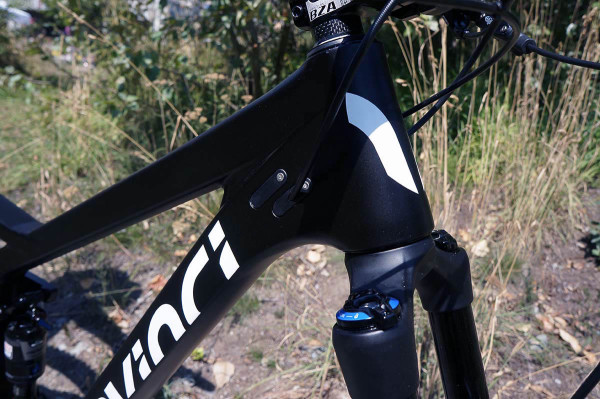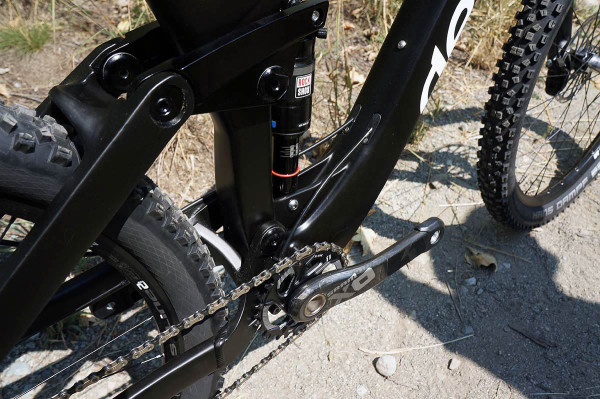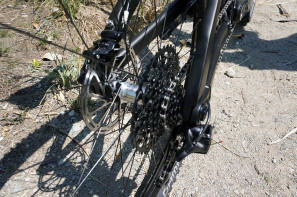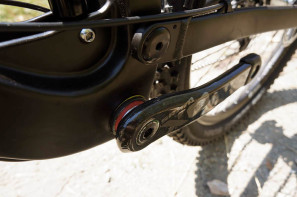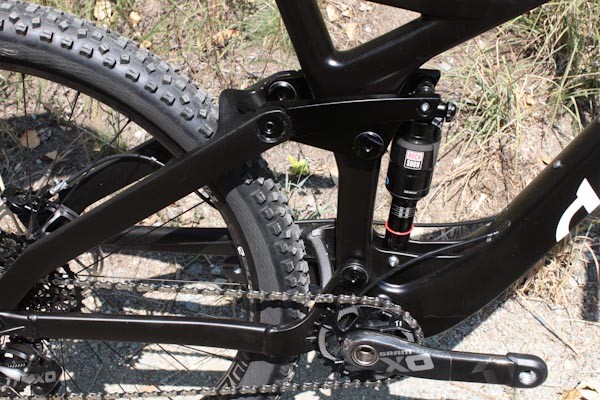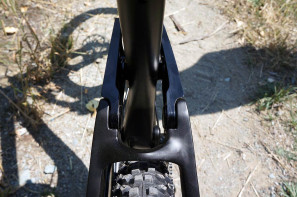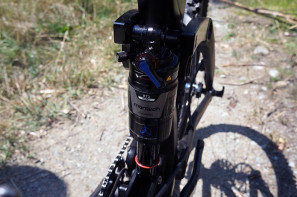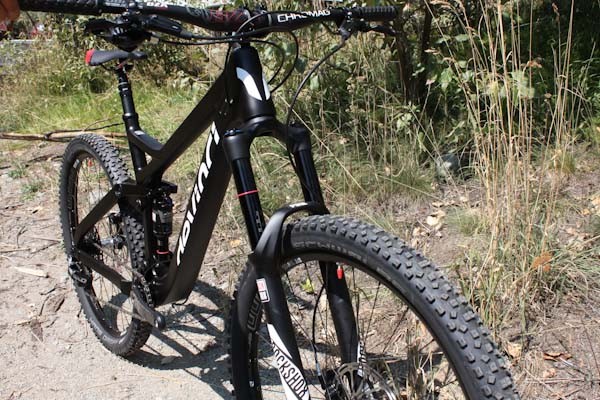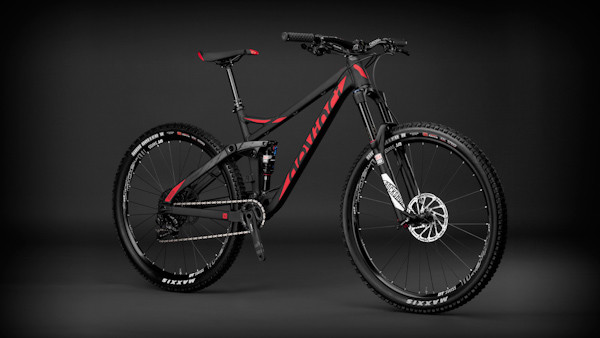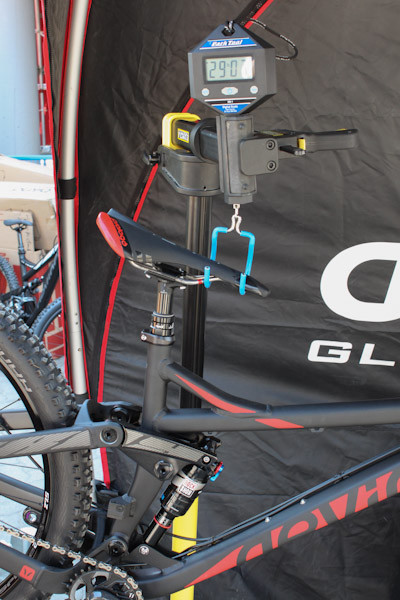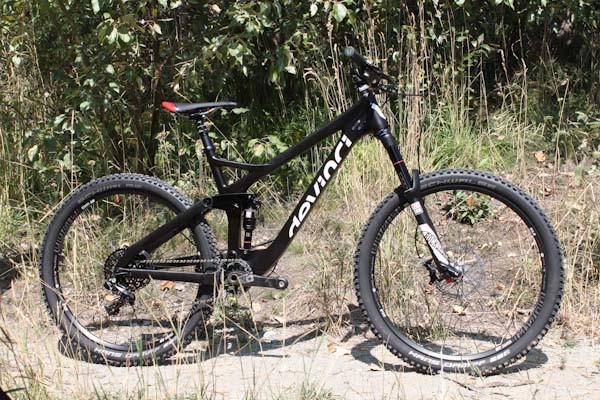
After their Troy all-mountain bike spent some time in the real world, Canada’s Devinci Cycles found a lot of riders were taking the Troys into more aggressive terrain than the company first anticipated. With this in mind, the 2016 model has seen some revisions that make this bike handle rough terrain more aggressively, but without sacrificing its ability to climb back up for lap two. The new fifth generation Troy was re-designed with input from Devinci riders like Steve Smith and Mark Wallace, who can be seen hammering the bike through Whistler’s technical terrain in the video below.
I had one short demo ride on a Troy last summer in Pemberton, B.C. and while I normally ride a longer travel bike the Troy ate up the rocky, rough trail with ease. I wasn’t too surprised to hear that other riders have been beefing up their component specs and riding highly technical terrain aboard this versatile steed. Keep on reading to find out what Devinci has tweaked for next year…
The highest end Troy frames are made from EPS molded T700 carbon (except for the alloy chainstays and rocker link), but Devinci has a full line of aluminum models as well. The carbon frames are one-by specific, but their aluminum siblings still include front derailleur mounts.
The Troy frames feature tapered head tubes, press fit BB92 bottom brackets, and run 27.5″ wheels. Rear travel remains the same as the previous model at 140mm, but now uses a slightly reconfigured Split-Pivot suspension platform. The frames also include routing for Stealth dropper posts, and enduro bearings in the pivots.
There are a number of changes for 2016’s frames. First off, to better suit rougher trails the rear end linkage was shortened and the rear shock was re-tuned to provide more ramp-up and bottom-out resistance.
The frame was also beefed up overall and the rear axle is now a Boost 148 to increase stability and stiffness. This does come at a very slight weight penalty, but definitely nothing too significant. The Troy’s frame has a few asymmetrical areas designed to optimize torsional stiffness- the seat mast and rear triangle are different side-to-side, and the rear shock position is offset.
One big change is that the top tubes have been lengthened by 20mm on all frame sizes, as some riders felt the old bikes were a bit cramped. The chainstays have been shortened a bit and now measure 424mm, and the new frame also has a lower standover height to alleviate potential crotch destruction when your feet suddenly go searching for solid ground.
While the outgoing Troy already had internal cable routing, the ports were just open holes. The new version now has protective plugs and two ports on either side of the top tube to accommodate various routing preferences.
The 2016 Troy will be available in four different builds called the RR, SX, RS, and S, plus as a frameset. All models feature a 150mm fork with 15x100mm front axles, and Boost 148 rear spacing.
The carbon or aluminum RR’s are Devinci’s highest end models featuring Rockshox Pike RCT3 Dual Air forks and Monarch RT debonair rear shocks, Sram Guide RSC brakes and X01 1×11 drivetrains, DT Swiss M1700 Spline wheels, plus a 125mm Reverb Stealth dropper post. RR models also come stock with a cockpit from Whistler, B.C’s Chromag Bikes, boasting an 800mm wide BZA handlebar matched to a 35mm clamp BZA stem.
The Troy SX has an almost equal build with a Rockshox Pike RC fork, DT Swiss M1700 Spline wheels, Sram’s Guide R brakes and X1 1×11 drivetrain, a 125mm reverb stealth dropper post and Chromag Fubar OSX handlebars.
Moving down the line the RS is still a 1×11 bike with a more price-conscious build, and the lowest spec S model is the only Troy that comes stock with a 2×10 drivetrain. Even the base model is equipped with a 780mm wide handlebar and a suitably short stem.
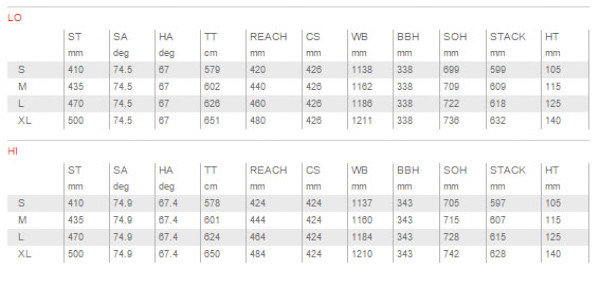
On Devinci’s scale the complete aluminum Troy SX RR weighed 29.07lbs, and while we didn’t have a carbon production model to hang up (the one pictured here is a prototype) the frames are nearly two pounds lighter.
The 2016 Troys will be available as of November, and pricing (in USD) is as follows; Carbon Bikes: RR- $6599, SX- $4999, RS- $3499, Frameset- $2099. Aluminum models: RR- $6099, SX- $4499, RS- $2999, S- $2599.
